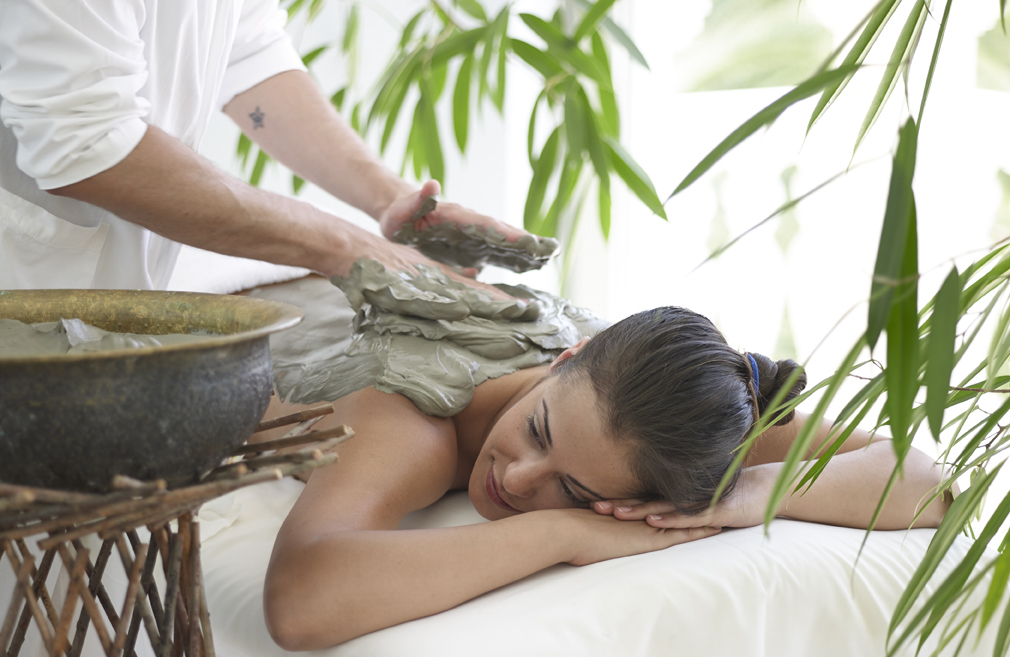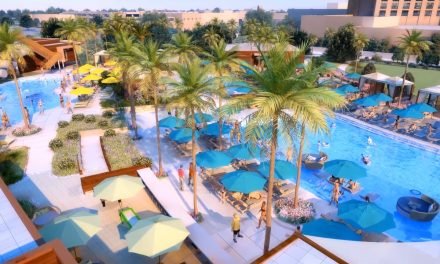
Greece’s Best Medical Spa

A wise man should consider that health is the greatest of human blessings…Hippocrates (c.460 – 400 BC)
In ancient times Edipsos was known aptly as Loutropolis (Spring City), and Greek philosophers such as Aristotle, Strabo, Plutarch and Hippocrates wrote in praise of its thermal healing waters. Located in Central Greece on the island of Evia, it is just 150 kilometers north of Athens. Although Heraclitus, another philosopher of note, famously declared, “you cannot step into the same water twice,” the springs have endured through the centuries and the water still heals. It is an amazing, centuries-old phenomenon.
The jewel in the crown of this healing paradise is the Thermae Sylla Spa Wellness Hotel, and health-conscious pilgrims come from all over the world for its therapeutic, curative waters. It has rightfully earned a laurel wreath as the best medical spa in Greece and in 2004, Conde Nast Traveller named it one of the “Ten Best Medical Spas in the World.”
I was a guest there for a week last October when I “took the waters,” enjoyed several treatments, including immersion in mud baths, and was rejuvenated and renewed as never before. It is with me still. I experienced serenity of mind in the soothing pools of the spa with its combined sea and natural spring waters and my body was massaged and pampered by the expert hands of world-class therapists.
Many foreign guests, especially those from Europe, Russia and the Balkan countries, are regular guests who return year after year to follow a regimented routine prescribed by the medical staff. The staff recommends two annual visits of fourteen days each for the most effective detox treatments. These include a daily mud bath, two swims a day in the external pool, (28-30 degrees C or 82.4-86 degrees F) and the warmer indoor pool, (32-34 degrees C or 89.6–107.6 degrees F), a therapeutic treatment of choice, and a five-hour rest. This is wellness at its best.
The outside pool is shaped like two large clover leafs and surrounded by comfortable lounge chairs and tables where the wait staff will serve you lunch and delicious, healthy fruit drinks. The pool’s waters are an equal balance of seawater and therapeutic waters. At regular intervals, water jets from the center and the sides, creating whirlpools and fountains. Guests stand under the fountains, allowing the strong streams of water to massage their heads and shoulders. When the flow of the water stops, everyone swims away; it is like watching a meticulously synchronized water ballet.
The inside pool is one hundred per cent therapeutic water. It is circled by numerous therapy rooms, steam rooms and a sauna. There are lounges for relaxation between the fifteen-minute recommended periods in the pool. These interval periods provide a perfect opportunity for guests to visit the reception area where they may purchase a variety of excellent beauty products, sold exclusively by the spa.
Tsantila Vasiliki, the hotel manager, explained that most of the guests follow the routine prescribed by the medical staff and come for two fourteen-day periods a year. “They are absolutely radiant when they leave,” she said, “and some say they experience a metamorphosis.” In my view, anyone who can experience a “metamorphosis,” —the lyrical Greek word for “transformation” —is favored by the gods;-) Ms. Tsatila said many guests compare the spa with the very cosmopolitan Cannes, France, because of its sophistication and distinctive “European atmosphere.”
The mineral spring water is natural and originates from a depth of 3,000 meters. Its temperature is very high and rich in thermo-metallic salts and trace elements, hence its healing powers. The mud used for the baths is a special mixture of local and Italian mud (I didn’t ask the logistics of transportation). Because of the mixture, it is said to be five times stronger than natural mud and extremely powerful in relieving the body of toxins. My extraordinary bath lasted twenty minutes, during which time my entire body, except for my face, was wrapped in plastic. It was the closest I have ever come to being hermetically sealed.
During the mud bath, I was alone in a quiet, darkened room. The attendant came in every three minutes to wipe the sweat from my face, preventing it from going into my eyes. At the end of my time, I was helped into the shower for a thorough rinsing, and then I was placed in a pleasantly warm whirlpool tub. My head rested on a pillow and my eyes were covered with a mask. After my twenty-minute soak, I showered, put on my bathing suit and a warm robe. I was then told to spend fifteen minutes each in the internal and external pools, followed by a rest in my room.
It was the most serene afternoon nap I have ever enjoyed. I experienced weightlessness in my body and total peace in my mind. I was among the uninitiated in this therapeutic, toxic-releasing health regime, and it was one of the most bliss-producing experiences of my life.
The following day a very, very special treat awaited me. I was scheduled for “Cleopatra’s Bath”, a treatment truly fit for a queen. It began with an ultra-hydrating olive facial mask. Next, my body was moisturized with olive oil while I floated on a waterbed as an aromatic mist sprayed my body at intervals. (Don’t hate me.) Legend has it that Cleopatra had both mud and milk baths and that these contributed to her well-being (before the asp).
Thermae Sylla Spa Wellness Hotel is not a hotel with a spa; it is a world-class medical spa in a majestic, neoclassical building that has pride of place on a quiet corner of Evoekos Bay. Surrounded by mountains and scented by aromatic herbs, the spa first opened in 1890 and was extensively renovated between 1996 and 1999. Open year-round, the Spa’s landscape and facilities are of understated elegance. Guests “take the waters” and have a choice of more than 100 therapeutic treatments in a setting of sublime luxury. There is no better medical spa in all of Greece.
How did the Spa get its name? We must go way, way back in history for the answer to that question. In fact, travel back with me to sometime in 100 B.C. It was during that century that the Roman General Syllas visited the springs and was said to be cured of uric arthritis. His memory was immortalized when the owners chose to name the building The Thermae Sylla Spa Wellness Hotel.
The fact that the popularity of the healing waters has endured through the centuries is extraordinary, even though its renown experienced natural periods of rise and decline. Its fame peaked during the Belle Èpoque “Beautiful Age” era (1871-1941), when celebrities such as Eleftheros Venizelos, Maria Callas, Omar Sharif, Greta Garbo, Aristotle Onassis and Winston Churchill were drawn to the healing waters. Since then, many other famous people have been guests. I learned that shortly before my stay, a Saudi princess and her children were guests for a week.
The hotel has a variety of rooms and suites, including two executive suites and one presidential suite. Bountiful breakfast and lunch buffets with wholesome food are offered in the Edipsos Restaurant. Mediterranean and international cuisine is enjoyed by guests in the elegant, outdoor Mesogheios Restaurant. Lighter fare is available at the Aithrio Bistro and at the pool bar.
There are literally more than one hundred treatments offered to provide relief for ailments ranging from degenerative arthritis and rheumatism to chronic gynecological troubles and posttraumatic deformities. In addition to treatments by therapists, the spa has an Inhalation Room of ionized water steam, recommended for ear, nose and throat problems. There are also four steam and sauna baths and a Teidarium. A warming room is maintained at a temperature between 30-40 degrees C. or 86-104 degrees F to promote relaxation and revitalization.
Alas, I had just two mud baths during my week at the spa, but during those seven days I was rejuvenated and renewed. To the lovely Vassiliki Tsatila and her thoughtful staff at the Thermae Syllla Spa Wellness Hotel, I say sas ευχαριστώ πολύ (thank you very much). I have undergone a metamorphosis and been favored by the gods.
Photos courtesy of Thermae Sylla Spa Wellness Hotel.






































